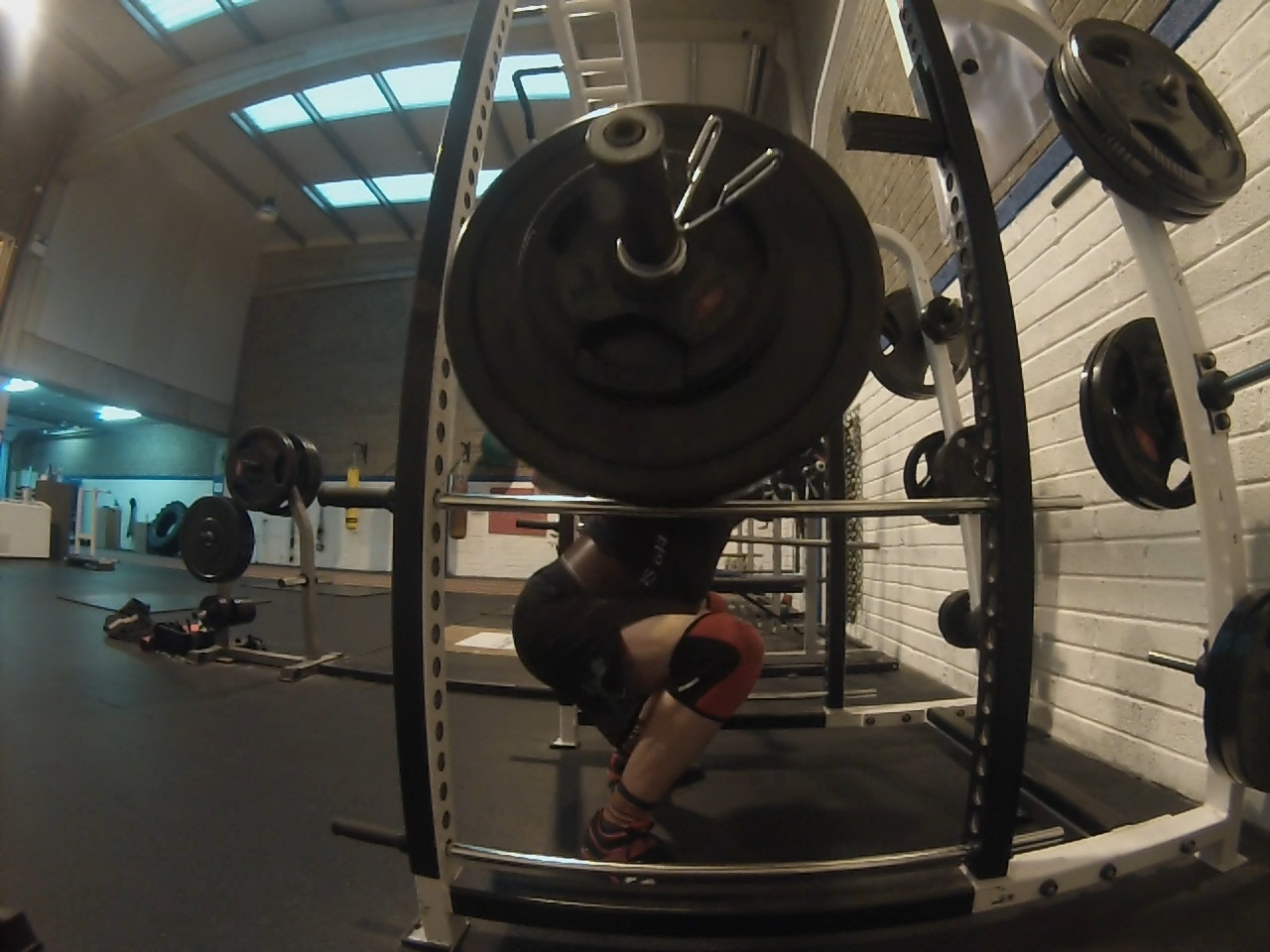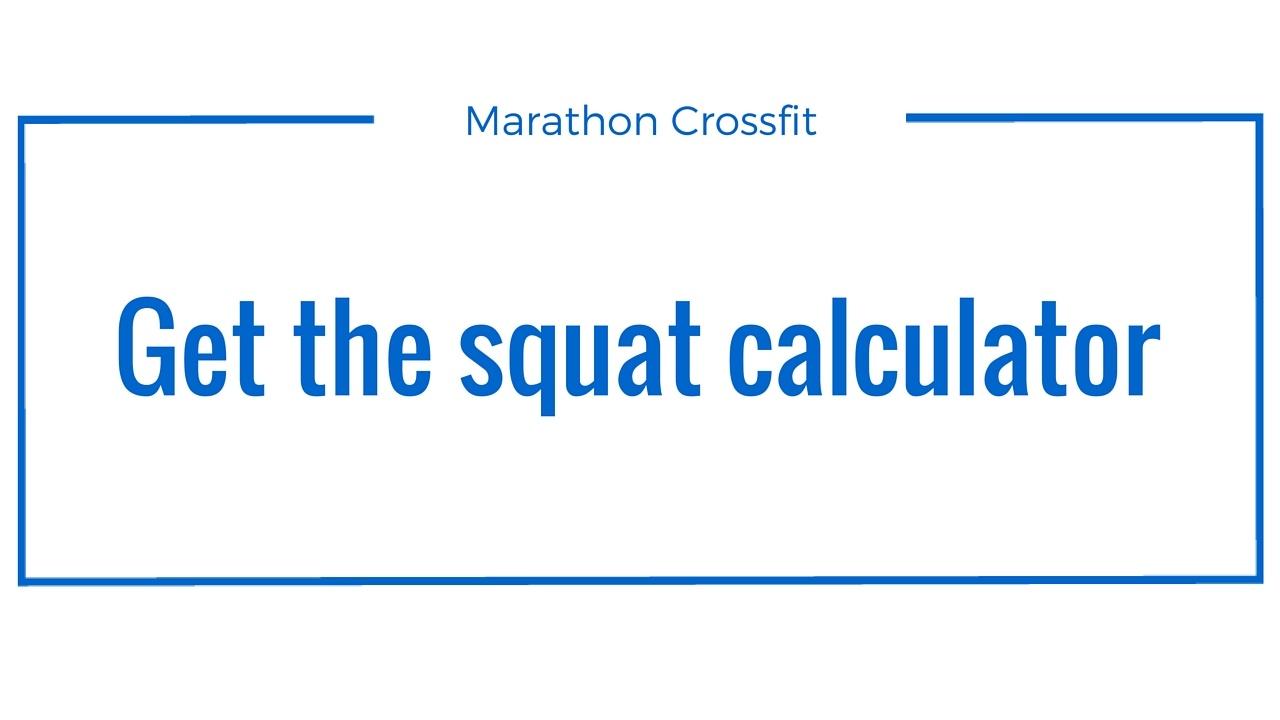How to perform a back squat for crossfit for beginners
The squat is one of the core exercises in weightlifting and powerlifting. There are two variations of the squat, front squat and back squat. The back squat is the most commonly performed lift and relevant to the programs you will find out there so we will stick with it for this article to get you started the fastest. The squat can be divided in three phases, the setup, the squat and the phase where you put the bar back into rack. For all of the phases you should establish a routine which stays the same for each of your squats so that you can minimize thinking once you get to high load. Your squat should always be the same and practiced in that matter.
The setup
When you imagine that you are attacking the bar when setting up for your back squat it will help you to get the needed muscle tension in place to perform the lift. No matter if it is your warm up set, work set or other think of it as a one rep maximum test and take it serious. This way you will get more out of every repetition and avoid injury due to messing about with the barbell or losing control midway through the lift.
Your hands should be positioned as close to your body as possible without being uncomfortable whilst keeping tension in your upper body. You want to lock that bar in close to your upper body so that there can be no movement during the lift. For me this is one thumb width from the beginning of the outer knurl, for others this can be wider depending on your physique. Remember to be symmetrical and in the middle of the bar to avoid imbalances. The knurling is your best guidance to secure this.
Once your hands are in position squeeze the bar as hard as you can. Keep this tension through the entire lift. This technique is also known as white knuckling and applies to all lifts to get the most bang for the buck.
Next step is to bring your body under the bar. I personally like to think of it as sucking the bar into your back and keep it in place. You will find a natural resting place where you feel the strongest. Go with that.
Get your feet parallel under the bar and bring your hip forward to unrack the weight. This is the easiest way to unrack the bar when using a power rack. If you use a monolift station just get in position and let your spotter unrack the bar for you.
Walk three steps back to get into squatting position. The first step is to get some distance from the J-Cups on which the weight rested. The second step plants your first foot in final position. The second step brings your second foot into position to start to squat. You might not get it perfect with three steps every time, but this should be your aim. You want to have the least possible steps to get into position to save energy for the actual squat.
Your feet should point slightly outwards at this stage. Have your feet pointed slightly outwards before you squat. A good way to determine have far they should point outwards is to squeeze your lower cheeks together whilst standing feet shoulder width apart without any weight on your shoulders. Your feet will travel outwards. Where they end up is the position you want for your squat.
Take a deep breath in. It is up to you whether you prefer to suck in air through your nose or your mouth. Ed Coan, hall of fame powerlifting member recommends breathing in through the nose, whilst Layne Norton, also a powerlift record holder, recommends breathing through the mouth. Based on this I would say go with whatever makes you feel stronger. I take a deep breath through the mouth.
The Squat
This concludes the setup phase of the squat. Keeping the air in you squat as deep as you can while maintaining proper form which means tight upper body, core and legs. Your aim is to go below parallel, which means going lower for your backside than your knees. Your knees should travel out and not cave in. Once you are in the lowest position you make your way up again and exhale the air out of your lungs when you lock out your hips (not before, this might get the bar flying) with a hiss. This completes one repetition and you start the next repetition by inhaling again. Repeat until you finished your set and walk the barbell back in the rack to finish. A good setup is key to a good squat. If you can not go below parallel it is an indicator that your ego got ahead of you and you either lack the flexibility or the strength to perform a proper squat with this load. Deload accordingly.
Further reading
- Are you sure about wearing the right shoes for squatting
- Bench press or squat first
- Bench press in a squat rack
- Better breathing makes your squat stronger
- Breathing Squat
- Can kettlebells swings replace squats
- Can you squat and deadlift on the same day
- Challenge, Sore
toda , Strong tomorrow - Confidential: Get rid of the machines and hire the squat
- Detailed Smolov squat routine review
- Eager to know about wearing the right suit for squatting
- How years of quality cossack squats easily help your fitness
- Overcome these sins of the squat
- Squat: How many reps
- Squat: How to improve
- Squat: When to inhale and exhale
- Squat without pads
- Squat Calculator [Free Downloads]
- The Truth squat or lunges?
- Ultimate 30 day squat challenge that
tighten and tone - What squat is best
- Why are there so many squats in Stronglifts 5x5


